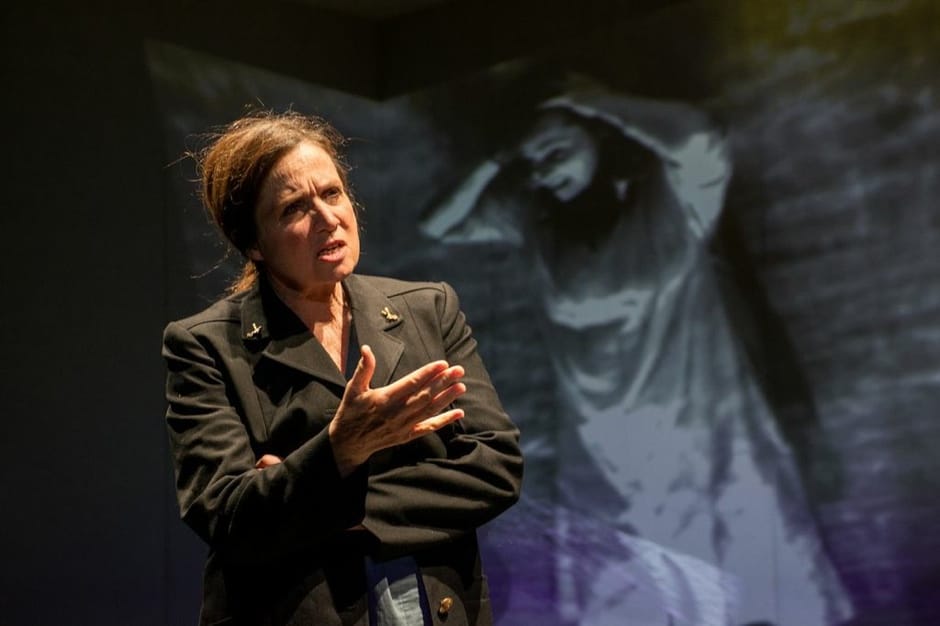“I need to take a deep breath,” begins Ken Gass, when asked about the future of his theatre company.
Gass is notorious for pushing the boundaries of Canadian theatre, and setting the tone for other Canadian artists to follow suite. Gass, who is the founding artistic director of both Canadian Rep Theatre and Factory Theatre, a winner of the Premier’s Award for Excellence in the Arts, and the Toronto Theatre Critics’ Award for his contribution to Toronto Theatre, is one of the central players in Toronto’s theatre scene.
Gass’s company, Canadian Rep Theatre, just completed its inaugural season with three home runs, staging the works of three of today’s most prominent Canadian playwrights: Wajdi Mouawad, George F. Walker, and Judith Thompson.
Deep breaths
As I sat in the dark in Berkeley Street Theatre, moments before Judith Thompson would perform her solo show, Watching Glory Die, I couldn’t help but expect a thoroughly Canadian story.
The gripping one-woman-show directed by Gass was part of the trio of plays that made up the most recent season at Canadian Rep Theatre.
If Watching Glory Die is any indication of the talent we can expect from Canadian Rep Theatre in the coming seasons, then we can all breathe a theatrical sigh of relief. When asked his rationale for choosing this particular piece to complete the trio of plays this season, Gass said: “It seemed like a good fit,” adding that every good idea often comes with some risk.
Other than staged readings, Thompson, the playwright and sole performer of Watching Glory Die, had not acted in decades. “Getting her solid and comfortable was another risk for her and the project, but I think one that worked out well in the end,” said Gass.
Striking a balance between Thompson as a writer and as an actor proved challenging to the project. “She’d still be rewriting scenes in her head,” Gass explained, which results in a different relationship to the work. Getting Thompson to commit to the shape of the piece, as well as rediscovering her foundations as an actor, proved challenges while working on the show.
In watching the play, some of this defining work is clear in Thompson’s performance. Her piece, about the complexities of Canada’s prison system, calls for three characters all played by one actor. The three characters Thompson has penned are Glory, a nineteen-year-old inmate who has been shuffled around the system since she was fourteen; Gail, a prison guard who is tough but sympathetic to young Glory; and Glory’s loving mother, Rosellen. Thompson, under Gass’s direction, successfully created three distinct voices and physical behaviours for the characters. Her energy as an immature teenager, stiff body and voice as the prison guard, and neuroses as the mother clarified the differences between each persona.
Canadian stories
Demonstrating the struggle of a young girl who, despite receiving a sentence of only six months, remained in the system for five years, the piece raises important questions about flaws in Canada’s prison system.
The play is based on the true story of Ashley Smith. Thompson was careful to remain true to the original details of the situation. Her play serves as a reminder to Canadians to critically examine the systems we often take for granted.
Thompson’s piece is entirely Canadian-made and is focused on firmly Canadian content. What makes a work authentically “Canadian” is a difficult question to answer, but, Gass explained, it’s all about connecting to the community.
With so many companies producing American and British works — or, as Gass refers to it, “importing our artists,” — maintaining distinctly Canadian art has become crucial to Canadian culture. Gass suggests that we must reach out and connect to the community through our own artists in order to sustain Canadian theatre.
The importance of fostering and encouraging Canadian artists is evident in Gass’s commitment to teaching incoming artists at the university level. As an instructor in the U of T drama program, much of his work stems from his experiences in the classroom.
“I often find there are plays that I explore with the classes, then I get ideas about these plays and I want to follow through on them in larger productions,” he said.
Gass elaborated that it is not just his classroom work that inspires future productions, but also that the inverse is true — establishing a reciprocal relationship between his multiple outlets. “There’s a comfortable connection between the teaching work and repertory work — they feed each other,” he added.
“Getting audiences to commit”
When asked about the future of Canadian theatre, Gass admitted, “many arts organizations are being greatly challenged with getting audiences to commit.”
Obtaining a donor base and getting a foot in the door for government grants is a challenge for any emerging theatre company, and Canadian Rep Theatre is no exception in spite of its successful season. Luckily, Gass’s reputation and creativity has set his company on solid footing for the time being.
“There’s no shortage of ideas and projects, so I think it’s trying to figure out how to work within the current theatre ecology and structure,” said Gass about the future of his company.
For Canadian Rep Theatre, innovative approaches to theatre include reaching beyond the traditional performance venues, taking some works out into communities and touring, and reaching out to schools and other cultural communities within the city.
Gass also hopes to see more racial and cultural diversity on stage to “reflect the face of our city.” Notorious for his colour-blind casting, Gass already has ideas for how to make this idea a reality.
Following a successful season, and chock full of ideas for the company’s future, Gass’s energy and enthusiasm demonstrate that, though Canadian Rep Theatre may be new, it has the potential to become one of Toronto’s most progressive theatre companies in its upcoming seasons.


